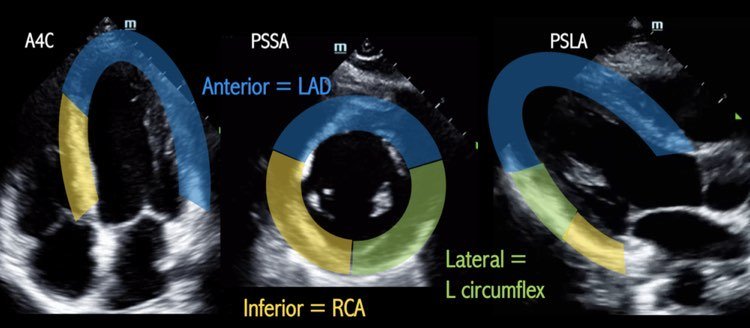Today’s VOTW is brought to you by Dr. Fagan, Dr. Davitt and Dr. Lat!
A 2 year old male presented with abdominal pain and vomiting x1 day as well as cough and nasal congestion x2 days. On exam, he was clutching his abdomen in discomfort. A POCUS was performed which showed…
Clip 1 shows an abdominal ultrasound in the RUQ showing the classic “target sign” measureing 3.5cm, concerning for intussusception. You can visualize a smaller circular structure within a larger circular structure representing a part of bowel telescoping into the next part of the bowel. In the center, there are small circular hypoechoic lymph nodes surrounded by echogenic mesenteric fat that serves as the leading point of the intussusception.
Image 1. Target or donut sign
Ultrasound is the test of choice for intussusception and several studies have shown high sensitivity (94%) and specificity (99%) when POCUS is performed by PEM physicians (2).
POCUS for Intussusception
Most commonly occurs at the ileo-cecal junction and most commonly found in the right lower or right upper quadrant
Look for a target sign or donut sign (in transverse view, see above) or sandwich or pseudokidney sign (in longitudinal view, see below)
Diameter > 2cm (remember in-✌-ssusception)
May see mesenteric fat and lymph nodes in the center
Image 2. Pseudokidney or sandwhich sign
How to perform the study
Use warm gel, have parents help distract, scan on parent's lap!
Use the linear probe
Picture frame pattern- start in the RLQ w/ probe marker to pts R scan towards the RUQ, then turn the probe w/ marker to pts head and scan towards the LUQ, then turn the probe w/ marker to pts R and scan down to the LLQ
Lawnmower pattern- start in the RLQ and lawnmower the entire abdomen scanning up and down from right to left with the probe marker to the pts R
Measure the diameter of the intussusseption if found
Image 3. Picture frame pattern
Back to the patient
Surgery was consulted, the patient underwent an air enema with resolution of the intussusseption. The patient was then discharged home.
References:
Lin-Martore. PEM POCUS Series: Intussusception. https://www.aliem.com/pem-pocus-series-intussusception/
Lin-Martore M, Kornblith AE, Kohn MA, Gottlieb M. Diagnostic Accuracy of Point-of-Care Ultrasound for Intussusception in Children Presenting to the Emergency Department: A Systematic Review and Meta-analysis. West J Emerg Med. 2020 Jul 2;21(4):1008-1016. doi: 10.5811/westjem.2020.4.46241. PMID: 32726276; PMCID: PMC7390574.






